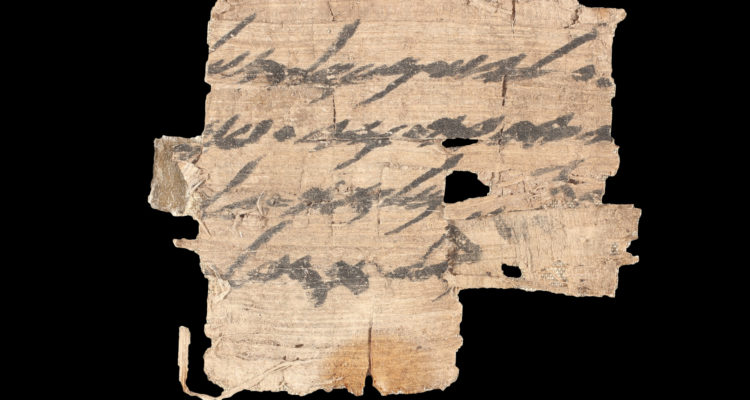After hanging on the wall of a Montana home for more than 50 years, a priceless 2,700-year-old papyrus scroll was returned to Israel by the owner’s son.
By Adina Katz, World Israel News
An extremely rare ancient document, dating back to the era of the First Temple in Jerusalem was recently repatriated to Israel, thanks to an extensive investigation led in part by the Israeli Antiquities Authority (IAA) and a generous donor who was willing to return the priceless text.
“In a joint intelligence operation, the Antiquities theft Prevention Unit of the Israel Antiquities Authority (IAA), and Professor Shmuel Ahituv, recipient of the Israel Prize for Biblical Studies, with the help of the Ministry of Culture and Sport and the Ministry of Jerusalem and Heritage, succeeded in repatriating a First Temple-period document,” the IAA announced Wednesday.
After renowned Ancient Hebrew researcher Dr. Ada Yardeni passed away in 2018, her colleague, Professor Shmuel Ahituv, set out to complete one of her unfinished projects.
While looking through Yardeni’s materials, Ahituv discovered a photograph of a previously unknown papyrus scroll from the First Temple period (the 5th or 6th century BCE) and her preliminary decipherment of the text.
The writing appeared to be an urgent missive, based on the rushed nature of the lettering, which instructed someone named Ishamel to “send,” but is then cut off.
Ahituv informed the IAA about the ancient papyrus, hoping that they could track down the location of the text.
Dr. Eitan Klein, an IAA investigator, managed to locate the ancient scroll in the U.S. state of Montana. A local man told Klein that the text had been gifted to his mother when she visited Israel as part of a Christian tour in 1965.
Joseph Sa’ad, curator of the Rockefeller Museum, and Halil Iskander Kandu, a prominent antiquities dealer from Bethlehem who sold thousands of Dead Sea scroll fragments, had presented her with the ancient text, which she framed and hung on her wall at home.
Klein convinced the man to visit Israel with the scroll and showed him the advanced technological methods used by the IAA to ensure that the ancient papyrus texts are properly preserved and protected.
“He was willing to [agree] that this fragment will stay in the hands of the State of Israel,” Klein said.
The IAA’s Dead Sea Scrolls Unit used radiometric dating to gauge the age of the document, which confirmed that it originated from the end of the First Temple period. According to the IAA, the scroll was likely looted from a cave in the Judean Desert in the early 20th century.
“Repatriating this rare document is part of an extensive process led by the Israel Antiquities Authority, aiming on the one hand, to prevent the illegal sale of the ancient scrolls that were plundered from the Judean Desert in the past, and on the other hand, to prevent further plundering of the cultural heritage finds [present] in the desert today,” said Eli Eskosido, director of the IAA.
“Towards the end of the First Temple period, writing was widespread,” said Dr. Joe Uziel, Director of the IAA’s Judean Desert Scrolls Unit, in a statement.
“However, First Temple-period documents written on organic materials — such as this papyrus — have scarcely survived. Whilst we have thousands of scroll fragments dating from the Second Temple period, we have only three documents, including this newly found one, from the First Temple period. Each new document sheds further light on the literacy and the administration of the First Temple period.”




